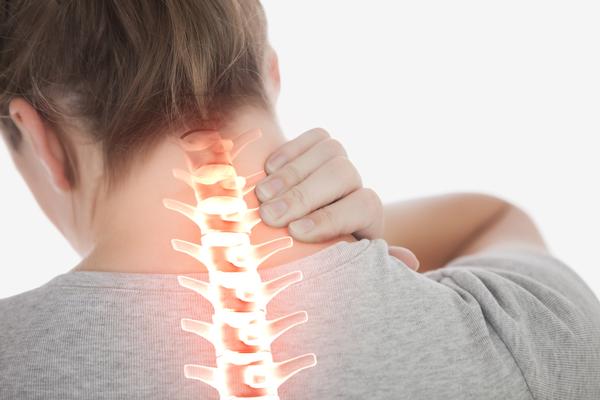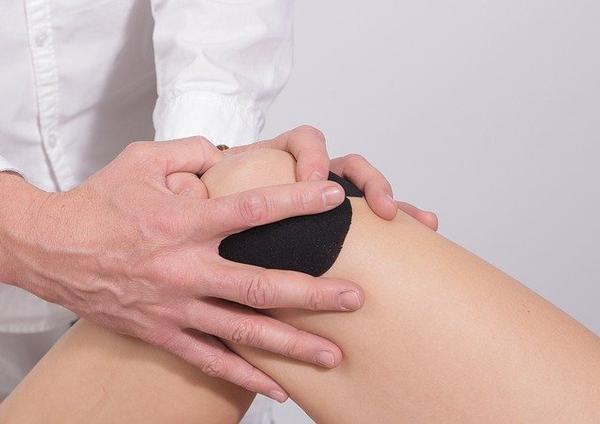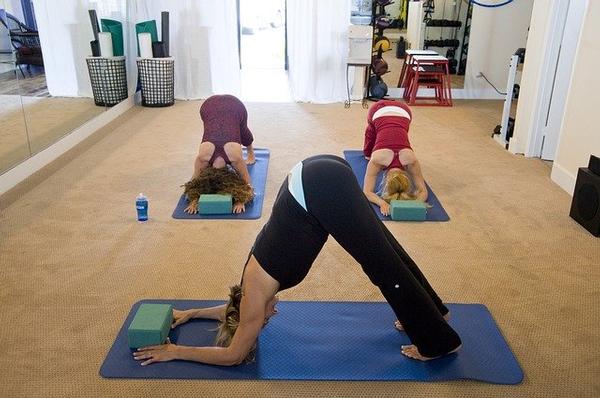Latest News and Information
Ways to help prevent neck strain/pain
February 6, 2020
Neck strains can keep you from living a normal life every day, and can even make you uncomfortable. Sometimes neck strains can cause you to lay in bed each day you have issues, or it could even cause you to have to go to the doctor. The good news, is that while you can prevent every injury there are a few things you can do to prevent neck strain. Something important to note, there is no 100% way to prevent an injury, but you can do your best to cut back on lifestyle habits that might heighten your risk.
At Night
Neck strain/pain can be prevented simply by how you sleep - and this includes the type of pillow you are using. If you are already experiencing some light neck pain...try a new pillow. Sometimes a firmer, or even softer pillow, can help adjust your body. Somethings can be very difficult. Not only can the type of pillow you are using can make a difference, but the sleeping position itself can also make a difference. Try laying on your back if you can, sleeping on your side can cause undo stress.Â
Your Phone
Technology can cause additional stress on your body - stress you might have not thought of. For example, if your computer is not at eye level...looking down or up can cause a lot of neck pain. What about texting? Are you spending all day texting? Looking down at your phone could cause unnecessary strain as well. Keep an eye out on where your eye sight is for each piece of technology.
Let’s Stretch!
Wellness covers quite a few things, including physical fitness and nutrition Physical fitness is important to help prevent neck strains - and we aren’t talking about regularly working out (although we do recommend that). We are talking about stretching your neck muscles often. Healthy nutrition is also important, but be sure to drink plenty of water to keep your body healthy.
Have a neck strain? Be sure to contact your local Wyoming/Nebraska physical therapist today. At North Platte Physical Therapy, we are here to help meet your needs. We serve the communities of Wyoming and Nebraska with 22 clinics offering a full range of physical therapy services. Contact us today for more information.
Â
Read More...
At Night
Neck strain/pain can be prevented simply by how you sleep - and this includes the type of pillow you are using. If you are already experiencing some light neck pain...try a new pillow. Sometimes a firmer, or even softer pillow, can help adjust your body. Somethings can be very difficult. Not only can the type of pillow you are using can make a difference, but the sleeping position itself can also make a difference. Try laying on your back if you can, sleeping on your side can cause undo stress.Â
Your Phone
Technology can cause additional stress on your body - stress you might have not thought of. For example, if your computer is not at eye level...looking down or up can cause a lot of neck pain. What about texting? Are you spending all day texting? Looking down at your phone could cause unnecessary strain as well. Keep an eye out on where your eye sight is for each piece of technology.
Let’s Stretch!
Wellness covers quite a few things, including physical fitness and nutrition Physical fitness is important to help prevent neck strains - and we aren’t talking about regularly working out (although we do recommend that). We are talking about stretching your neck muscles often. Healthy nutrition is also important, but be sure to drink plenty of water to keep your body healthy.
Have a neck strain? Be sure to contact your local Wyoming/Nebraska physical therapist today. At North Platte Physical Therapy, we are here to help meet your needs. We serve the communities of Wyoming and Nebraska with 22 clinics offering a full range of physical therapy services. Contact us today for more information.
Â
Back Surgery 101
January 31, 2020
Have you been told you’ll need to have back surgery? Back surgery can certainly be overwhelming, and even a little scary...but it doesn’t have to be.There are some important things you should know about back surgery and if you are on the fence knowing the pros and cons of pursuing back surgery can help you make your decision. If you still have questions, reach out to your local Wyoming or Nebraska physical therapist, or your team here at North Platte.Â
There is always a reason your doctor is recommending back surgery - keep that in mind. While it can seem extreme, or even scary, you don’t need to be worried. Having the back surgery your doctor recommends can result in several benefits, including improved physical fitness/ability, improved mood, and ultimately getting back to your normal mode of operation. Post surgery, there might be some additional work needed...and that’s where we come in. Physical therapy after back surgery is extremely important - it’ll help you return to your normal day to day routine faster, and with less complications.
Now, there are a few different types of back surgery, and while the list is exhaustive here are some of the most common surgeries to help solve for back pain:
Spinal fusion: If you are having a spinal fusion surgery, your doctor will be joining your vertebrae. This is a common type of surgery, however the surgery will limit your motion between the vertebrae. Despite this, most likely you will not experience any limit in your range of motion.Â
Laminectomy: This is a surgery in which parts of your bone, bone spurs, or ligaments will be removed. While this will help relieve any pressure you are feeling...it can lead to a more unstable spine. Often times you might have this surgery, and then a spinal fusion to assist in stabilization.Â
Disk replacement: This is exactly what it sounds like - a surgeon will remove a damaged disk and replace it with an artificial one. This tends to be similar to a spinal fusion, but recovery time is much shorter and this surgery will allow you to continue to move your spine.
If you have questions concerning an upcoming back surgery, we recommend that you reach out to your primary care physician and/or your physical therapist. You should always ask questions if you are having questions or doubts about an upcoming surgery or even treatment. If you are experiencing body aches and pains, also be sure to reach out to your primary care physician or our team. At North Platte Physical Therapy, we are here to help meet your needs. We serve the communities of Wyoming and Nebraska with 22 clinics offering a full range of physical therapy services. Contact us today for more information.
Â
Read More...
There is always a reason your doctor is recommending back surgery - keep that in mind. While it can seem extreme, or even scary, you don’t need to be worried. Having the back surgery your doctor recommends can result in several benefits, including improved physical fitness/ability, improved mood, and ultimately getting back to your normal mode of operation. Post surgery, there might be some additional work needed...and that’s where we come in. Physical therapy after back surgery is extremely important - it’ll help you return to your normal day to day routine faster, and with less complications.
Now, there are a few different types of back surgery, and while the list is exhaustive here are some of the most common surgeries to help solve for back pain:
Spinal fusion: If you are having a spinal fusion surgery, your doctor will be joining your vertebrae. This is a common type of surgery, however the surgery will limit your motion between the vertebrae. Despite this, most likely you will not experience any limit in your range of motion.Â
Laminectomy: This is a surgery in which parts of your bone, bone spurs, or ligaments will be removed. While this will help relieve any pressure you are feeling...it can lead to a more unstable spine. Often times you might have this surgery, and then a spinal fusion to assist in stabilization.Â
Disk replacement: This is exactly what it sounds like - a surgeon will remove a damaged disk and replace it with an artificial one. This tends to be similar to a spinal fusion, but recovery time is much shorter and this surgery will allow you to continue to move your spine.
If you have questions concerning an upcoming back surgery, we recommend that you reach out to your primary care physician and/or your physical therapist. You should always ask questions if you are having questions or doubts about an upcoming surgery or even treatment. If you are experiencing body aches and pains, also be sure to reach out to your primary care physician or our team. At North Platte Physical Therapy, we are here to help meet your needs. We serve the communities of Wyoming and Nebraska with 22 clinics offering a full range of physical therapy services. Contact us today for more information.
Â
The most common causes of knee pain - and how to remedy it
January 22, 2020
Knee pain is not only uncomfortable, it can be worrisome. With so much talk about MCL and ACL tears...any little knee pain might have you wondering. It’s important to know that there could be a number of reasons you are experiencing your knee-pain, and as your Wyoming/Nebraska physical therapist we can help you on your path to recovery. Remember that if you think you might be experiencing extreme knee pain, or it’s something more than a little soreness, see your primary care physician. This is not a list of all symptoms, but a general guide to help you determine your next steps.
Tendonitis
Are you an active person? We hope the answer is yes, but while being active it’s important to take your time and be careful. Overuse can result in tendonitis - an inflammation of the tendons. It can also commonly occur during high impact sports in which you’re forcefully hitting the ground. Symptoms of tendonitis include swelling in the area of the tendon, feeling a lump in that area, and difficulty moving that tendon.
Torn cartilageÂ
Trauma to the knee, such as a hard hit or even an extreme misstep, can cause the cartilage in and around the knee to tear. Unfortunately, cartilage tears can be very serious, particularly if you are an athlete. Symptoms of a torn cartilage in the knee can include tenderness, popping sounds, swelling, and inability to put weight on that leg.
Sprained/strained ligaments
Your ligaments are as equally important to stability as your cartilage. These also can be serious, and can occur from a hard hit or other trauma to your knee and surrounding area. Because of how important ligaments are to the stability of your knee, these injuries can also be very serious. Symptoms are similar to that of torn cartilage, so if you are experiencing any of them be sure to see a doctor promptly.
This is not an exhaustive list of all causes of knee pain. If you are experiencing any of the above issues, or have additional pain concerns please reach out to your primary care physician. Everyone is truly different, and each body reacts differently to pain and stress. We can always help advise you on the proper course of action, or refer you to a local primary care physician that can help you figure out your next steps.Â
No matter what your diagnosis is, we at North Platte Physical Therapy, are here to help meet your needs. Physical therapy can be essential in healing from any knee-injury, and with proper care you can be back to your normal routine in no time. We serve the communities of Wyoming and Nebraska with 22 clinics offering a full range of physical therapy services. Contact us today for more information.
Â
Read More...
Tendonitis
Are you an active person? We hope the answer is yes, but while being active it’s important to take your time and be careful. Overuse can result in tendonitis - an inflammation of the tendons. It can also commonly occur during high impact sports in which you’re forcefully hitting the ground. Symptoms of tendonitis include swelling in the area of the tendon, feeling a lump in that area, and difficulty moving that tendon.
Torn cartilageÂ
Trauma to the knee, such as a hard hit or even an extreme misstep, can cause the cartilage in and around the knee to tear. Unfortunately, cartilage tears can be very serious, particularly if you are an athlete. Symptoms of a torn cartilage in the knee can include tenderness, popping sounds, swelling, and inability to put weight on that leg.
Sprained/strained ligaments
Your ligaments are as equally important to stability as your cartilage. These also can be serious, and can occur from a hard hit or other trauma to your knee and surrounding area. Because of how important ligaments are to the stability of your knee, these injuries can also be very serious. Symptoms are similar to that of torn cartilage, so if you are experiencing any of them be sure to see a doctor promptly.
This is not an exhaustive list of all causes of knee pain. If you are experiencing any of the above issues, or have additional pain concerns please reach out to your primary care physician. Everyone is truly different, and each body reacts differently to pain and stress. We can always help advise you on the proper course of action, or refer you to a local primary care physician that can help you figure out your next steps.Â
No matter what your diagnosis is, we at North Platte Physical Therapy, are here to help meet your needs. Physical therapy can be essential in healing from any knee-injury, and with proper care you can be back to your normal routine in no time. We serve the communities of Wyoming and Nebraska with 22 clinics offering a full range of physical therapy services. Contact us today for more information.
Â
Stay safe while working toward your New Year's Resolution
January 15, 2020
Happy New Year! With a new year comes resolutions, and for many Americans it includes hitting the gym and getting healthy. While there are several different ways you can do this, the most important thing is to stay safe and take all the precautions needed to approach it in a safe and productive way. While we certainly would love to meet you in our Wyoming/Nebraska physical therapist office...let’s try to avoid injuries! To help you stay safe, we’ve compiled our favorite five tips that are sure to help keep you on the right track.
Get Guidance
Yes, we are giving you some light guidance here. But getting a personal trainer or coach will do wonders. Not only will this help you reach your goals faster, they can help better train and prepare your body for any strenuous activity. While everyone wants to reach their goals, it is essential that one does so safely, and with as little injury as possible.Â
Warm Up
If you are getting ready to partake in any type of physical activity, you should really take time to complete a short five minute warm up. Warm up with a light walk, or even some light stretching. While it might seem as if it’s not helpful, and not helping you meet your goals, it’ll ultimately help keep yourself from getting any injuries.
NutritionÂ
You’ll never meet your goals if you aren’t fueling your body properly. While fad diets are certainly not healthy, fueling your body with fruits, vegetables and lean proteins are the quickest way to help fuel your workouts.Â
Listen to Your Body
If you feel strain on your body, be sure to relax. Muscle strains and pains are your body’s way of telling you to slow down, take a breather, and make sure that you get some much needed rest. The same applies to nutrition - if you are hungry, be sure to get some healthy foods into your body.
Cross Train
If you are hoping to reach your goals, it’s important to cross train. Cross training will keep your muscles from getting exhausted, and it’ll help keep your workouts fresh, stimulating, and impactful. If your body becomes to use one type of workout, it’s common to plateau and you can cause your muscles un-needed strain and damage.
If you start to develop an injury, be sure to reach out to your primary care physician, they can help guide you on the right treatment path. At North Platte Physical Therapy, we are here to help meet your needs. We serve the communities of Wyoming and Nebraska with 22 clinics offering a full range of physical therapy services. Contact us today for more information.
Â
Read More...
Get Guidance
Yes, we are giving you some light guidance here. But getting a personal trainer or coach will do wonders. Not only will this help you reach your goals faster, they can help better train and prepare your body for any strenuous activity. While everyone wants to reach their goals, it is essential that one does so safely, and with as little injury as possible.Â
Warm Up
If you are getting ready to partake in any type of physical activity, you should really take time to complete a short five minute warm up. Warm up with a light walk, or even some light stretching. While it might seem as if it’s not helpful, and not helping you meet your goals, it’ll ultimately help keep yourself from getting any injuries.
NutritionÂ
You’ll never meet your goals if you aren’t fueling your body properly. While fad diets are certainly not healthy, fueling your body with fruits, vegetables and lean proteins are the quickest way to help fuel your workouts.Â
Listen to Your Body
If you feel strain on your body, be sure to relax. Muscle strains and pains are your body’s way of telling you to slow down, take a breather, and make sure that you get some much needed rest. The same applies to nutrition - if you are hungry, be sure to get some healthy foods into your body.
Cross Train
If you are hoping to reach your goals, it’s important to cross train. Cross training will keep your muscles from getting exhausted, and it’ll help keep your workouts fresh, stimulating, and impactful. If your body becomes to use one type of workout, it’s common to plateau and you can cause your muscles un-needed strain and damage.
If you start to develop an injury, be sure to reach out to your primary care physician, they can help guide you on the right treatment path. At North Platte Physical Therapy, we are here to help meet your needs. We serve the communities of Wyoming and Nebraska with 22 clinics offering a full range of physical therapy services. Contact us today for more information.
Â
Starting a new running routine? Here's what you need to know.
January 8, 2020
With a new year ahead, several New Year’s Resolutions across the country include starting a new running routine. As one of the best forms of exercise, running is a great way to help meet your new fitness/health goals this year. When starting a new running routine, there are a few things you should know and watch out for! As your local Wyoming/Nebraska physical therapist, we are here to help.
Getting Started
Getting started on a running plan can be intimidating, overwhelming, and ultimately scary! But it doesn’t have to be. It’s best to establish a running plan for your first 6-8 weeks and while doing so plan your walk to run ratio. If you are just starting out, stick to a 2:1 ratio to help your body adjust to the sudden surge of physical activity. Aim for a walk/run workout for 3-4 times a week, and to help your body further adjust make sure to cross train. An elliptical workout is a great way to help your body adjust.
InjuriesÂ
Runners, particularly newbie runners or those that run often, are prone to more injuries then you’d anticipate. Make sure to keep an eye out for symptoms of the following common injuries, and see your doctor if you are experiencing any pain.
Runner’s Knee: Also known as patellofemoral pain syndrome (PFPS) affects the cartilage under the kneecap - this irritation occurs in approximately 40 percent of running injuries. If you start to experience pain surrounding the knee cap, try to take some time off from running and rest. If this pain occurs for more than a few days of rest - see a primary care physician.
Shinsplints: Ever heard of these? Shinsplits, also known as medial tibial stress syndrome, is a pain that occurs around your tibia when small tears develop in the muscles. Shinsplits occur for overuse, and are particularly common in those who just start running and working out again. Take your time, and be careful not to overdo it.
Achilles tendonitis: When your achilles tendon becomes stressed, it strains and becomes irritated. This irritation can make it difficult to walk/run, and is one of the more common injuries for runners.Â
If you start to develop an injury while practicing your new running routine, be sure to reach out to your primary care physician, they can help guide you on the right treatment path. At North Platte Physical Therapy, we are here to help meet your needs. We serve the communities of Wyoming and Nebraska with 22 clinics offering a full range of physical therapy services. Contact us today for more information.
Â
Read More...
Getting Started
Getting started on a running plan can be intimidating, overwhelming, and ultimately scary! But it doesn’t have to be. It’s best to establish a running plan for your first 6-8 weeks and while doing so plan your walk to run ratio. If you are just starting out, stick to a 2:1 ratio to help your body adjust to the sudden surge of physical activity. Aim for a walk/run workout for 3-4 times a week, and to help your body further adjust make sure to cross train. An elliptical workout is a great way to help your body adjust.
InjuriesÂ
Runners, particularly newbie runners or those that run often, are prone to more injuries then you’d anticipate. Make sure to keep an eye out for symptoms of the following common injuries, and see your doctor if you are experiencing any pain.
Runner’s Knee: Also known as patellofemoral pain syndrome (PFPS) affects the cartilage under the kneecap - this irritation occurs in approximately 40 percent of running injuries. If you start to experience pain surrounding the knee cap, try to take some time off from running and rest. If this pain occurs for more than a few days of rest - see a primary care physician.
Shinsplints: Ever heard of these? Shinsplits, also known as medial tibial stress syndrome, is a pain that occurs around your tibia when small tears develop in the muscles. Shinsplits occur for overuse, and are particularly common in those who just start running and working out again. Take your time, and be careful not to overdo it.
Achilles tendonitis: When your achilles tendon becomes stressed, it strains and becomes irritated. This irritation can make it difficult to walk/run, and is one of the more common injuries for runners.Â
If you start to develop an injury while practicing your new running routine, be sure to reach out to your primary care physician, they can help guide you on the right treatment path. At North Platte Physical Therapy, we are here to help meet your needs. We serve the communities of Wyoming and Nebraska with 22 clinics offering a full range of physical therapy services. Contact us today for more information.
Â




